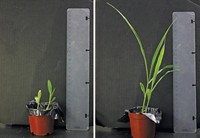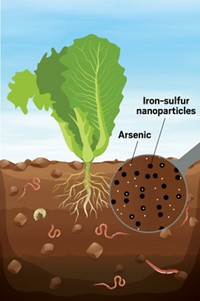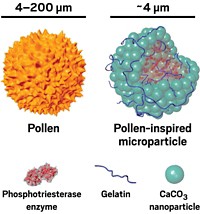Advertisement
Grab your lab coat. Let's get started
Welcome!
Welcome!
Create an account below to get 6 C&EN articles per month, receive newsletters and more - all free.
It seems this is your first time logging in online. Please enter the following information to continue.
As an ACS member you automatically get access to this site. All we need is few more details to create your reading experience.
Not you? Sign in with a different account.
Not you? Sign in with a different account.
ERROR 1
ERROR 1
ERROR 2
ERROR 2
ERROR 2
ERROR 2
ERROR 2
Password and Confirm password must match.
If you have an ACS member number, please enter it here so we can link this account to your membership. (optional)
ERROR 2
ACS values your privacy. By submitting your information, you are gaining access to C&EN and subscribing to our weekly newsletter. We use the information you provide to make your reading experience better, and we will never sell your data to third party members.
Environment
Fruit Flies Shake Off Silver Nanoparticles
Nanomaterials: Scientists investigate the chronic toxicity of nanoparticles in the insects
by Naomi Lubick
May 18, 2011
As nanoparticles become ubiquitous in consumer products, scientists want to understand the chemicals' effects on organisms in the environment. In a new study, researchers investigate the chronic toxicity of silver nanoparticles on fruit flies and find that the flies can adapt to the tiny particles over just a few generations (Environ. Sci. Technol., DOI: 10.1021/es104216b).
Very few studies have looked at the chronic toxicity of nanoparticles of any type, including silver nanomaterials, comments Wen-Xiong Wang of Hong Kong University of Science and Technology, who did not participate in the new work.
Silver nanoparticles were among the first metal nanoparticles to reach the market. Manufacturers have exploited the particles' antimicrobial properties by adding them to cleaning products, toys, clothing, and coatings inside washing machines. As a result, the nanomaterials have washed into the environment through wastewater discharge and other routes.
The U.S. Environmental Protection Agency is considering whether to regulate silver nanoparticles as a pesticide. Researchers have previously tested the chemicals' acute, or immediate, toxicity in short-term tests on algae, grass, flatworms, and water bugs called daphnids. But while regulators have ample acute toxicity data, the agency lacks chronic, long-term toxicity data.
Libor Kvitek and Ales Panacek of Palacký University, in Olomouc, Czech Republic, and their colleagues wanted to investigate silver nanoparticles' chronic toxicity in fruit flies (Drosophila melanogaster). So the researchers placed 5 mg/L of the particles in the food of one group of flies, and gave a second group unpolluted food.
Then they watched subsequent generations of flies develop with the same diets. For the first three to five generations, fruit flies exposed to the silver nanoparticles had fewer offspring than the control group. But in subsequent generations, the flies' ability to reproduce recovered: The fifth through seventh generations of fruit flies began to have more offspring, reaching nearly the same reproductive levels as the control flies.
The team thinks that later generations adapted by eating less to avoid the nanoparticles. As a result, the flies weighed almost 20% less than the control flies.
Bernd Nowack of Empa, the Swiss Federal Laboratories for Materials Science and Technology, praises the researchers for gathering chronic toxicity data. But he thinks that testing at lower concentrations, such as 5 ng/L or 5 µg/L, would be more relevant to real-world situations. Wang agrees, saying that the mechanism of toxicity can differ at higher concentrations. For example, at low, environmentally relevant levels, the toxic silver ions that come from the particles cause problems, he says. But at higher concentrations, he adds, the particles themselves wreak havoc as they get caught in the animals' guts.
Kvitek responds that the team intended the current tests to be preliminary, at concentrations that kill bacteria. The research team plans next to expose fruit flies chronically to more environmentally relevant levels, he says.





Join the conversation
Contact the reporter
Submit a Letter to the Editor for publication
Engage with us on Twitter